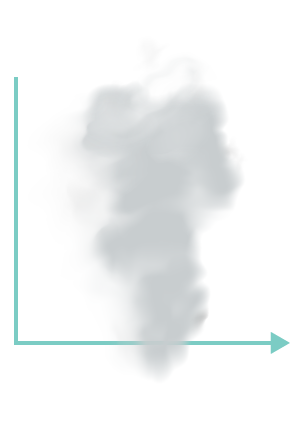
CONSUMERS
The amount of ethanol currently in gasoline damages engines, according to automakers. Extensive testing by the automotive and oil industries shows higher ethanol blends may result in damaged engines and fuel systems for owners of the overwhelming majority of cars as well as boats, lawnmowers and other gasoline engines.
Source: Fill Up On Facts

AIR
Burning ethanol adds 22 percent more hydrocarbons to the atmosphere than does burning gasoline, leading to a nearly two parts per billion increase in tropospheric ozone, or ground level ozone pollution.
Source: Scientific American
“Want to Reduce Air Pollution? Don’t Rely on Ethanol Necessarily”
LAND & WATER
Corn acreage, which has expanded by over 40 percent in response to ethanol demands, requires extensive fertilization, adding to nitrogen and phosphorus that run off into lakes and streams and eventually enter the Mississippi River watershed. This is aggravated by systems of subterranean tiles and drains — 98% of Iowa’s arable fields are tiled — that accelerate field drainage into ditches and local watersheds. As a result, loadings of nitrogen and phosphorus into the Mississippi and the Gulf of Mexico encourage algae growth, starving water bodies of oxygen needed by aquatic life and enlarging the hypoxic “dead zone” in the gulf.
Source: Yale e360

FOOD SOURCE & COST
In 2000 (before the mandate), 90% of corn production was used for food. Today, only 60% of corn produced is used for food, driving up the cost of corn as food.
Sources: Agricultural Marketing Research Center & Forbes

CONSUMERS
The amount of ethanol currently in gasoline damages engines, according to automakers. Extensive testing by the automotive and oil industries shows higher ethanol blends may result in damaged engines and fuel systems for owners of the overwhelming majority of cars as well as boats, lawnmowers and other gasoline engines.
Source: Fill Up On Facts

AIR
Burning ethanol adds 22 percent more hydrocarbons to the atmosphere than does burning gasoline, leading to a nearly two parts per billion increase in tropospheric ozone, or ground level ozone pollution.
Source: Scientific American
“Want to Reduce Air Pollution? Don’t Rely on Ethanol Necessarily”
LAND & WATER
Corn acreage, which has expanded by over 40 percent in response to ethanol demands, requires extensive fertilization, adding to nitrogen and phosphorus that run off into lakes and streams and eventually enter the Mississippi River watershed. This is aggravated by systems of subterranean tiles and drains — 98% of Iowa’s arable fields are tiled — that accelerate field drainage into ditches and local watersheds. As a result, loadings of nitrogen and phosphorus into the Mississippi and the Gulf of Mexico encourage algae growth, starving water bodies of oxygen needed by aquatic life and enlarging the hypoxic “dead zone” in the gulf.
Source: Yale e360

FOOD SOURCE & COST
In 2000 (before the mandate), 90% of corn production was used for food. Today, only 60% of corn produced is used for food, driving up the cost of corn as food.
Sources: Agricultural Marketing Research Center & Forbes

RETHINK ETHANOL
Rethink Ethanol is a non-profit group dedicated to increasing awareness and initiating changes in ethanol usage in order to help the environment and people.
© 2025 Rethink Ethanol | Privacy Policy
